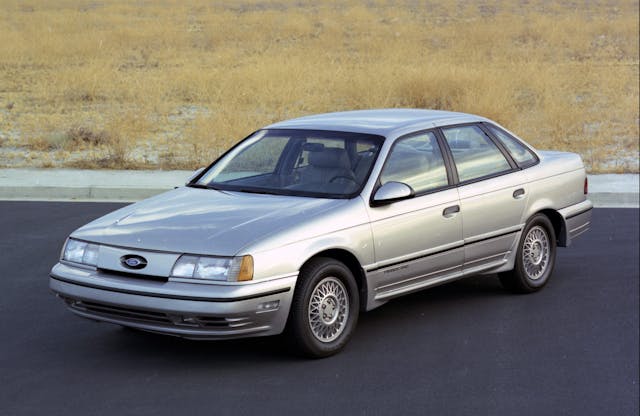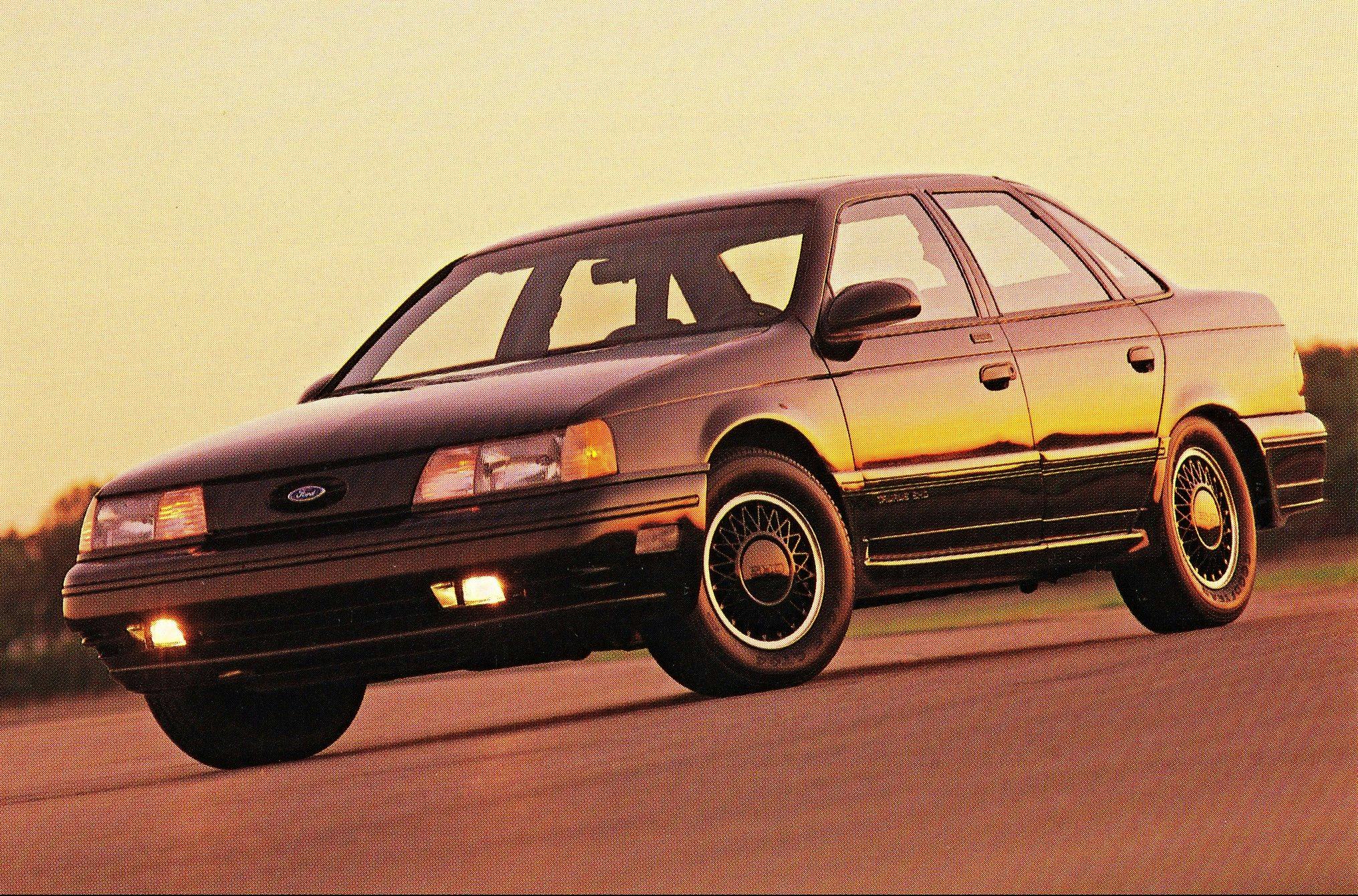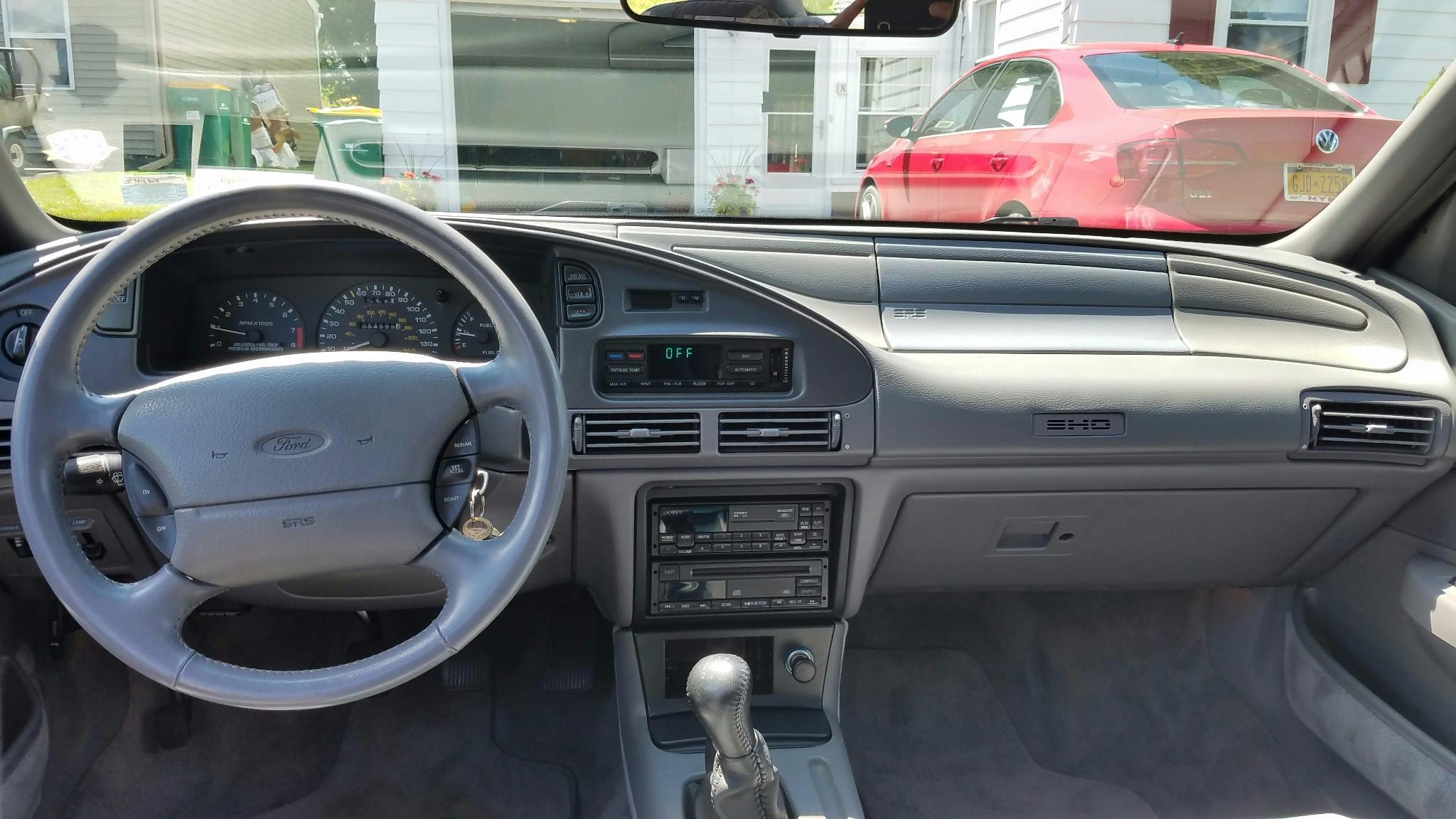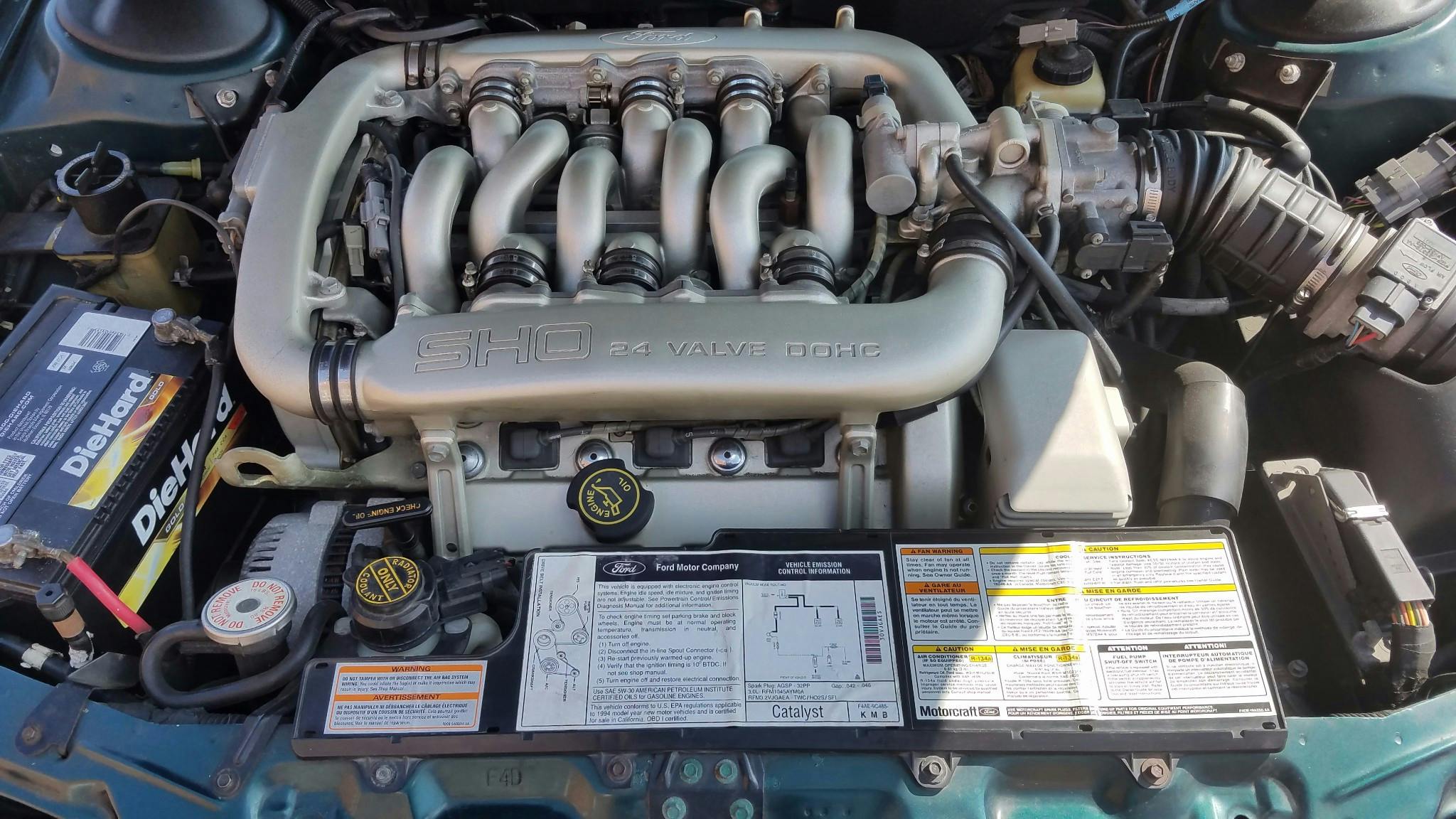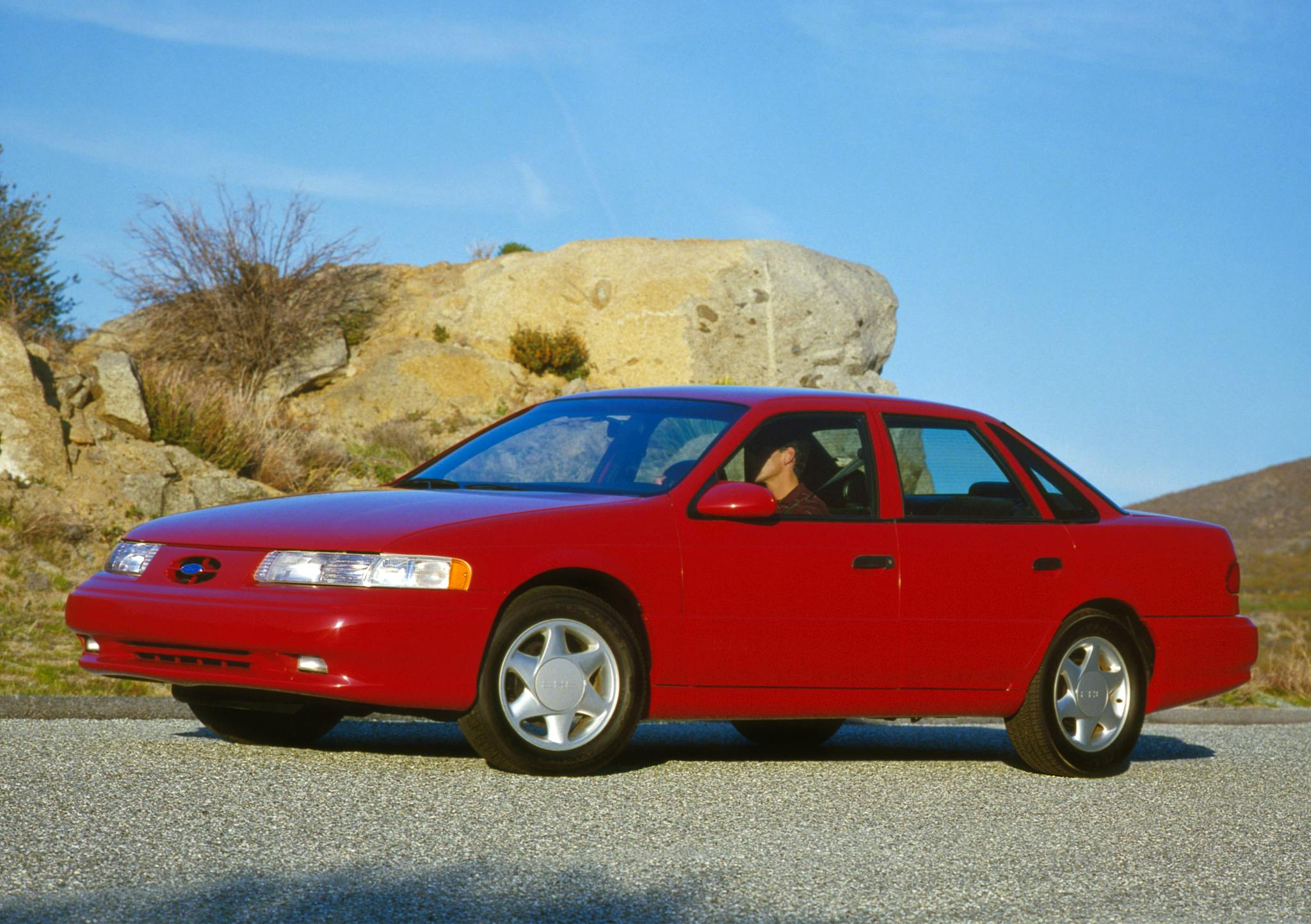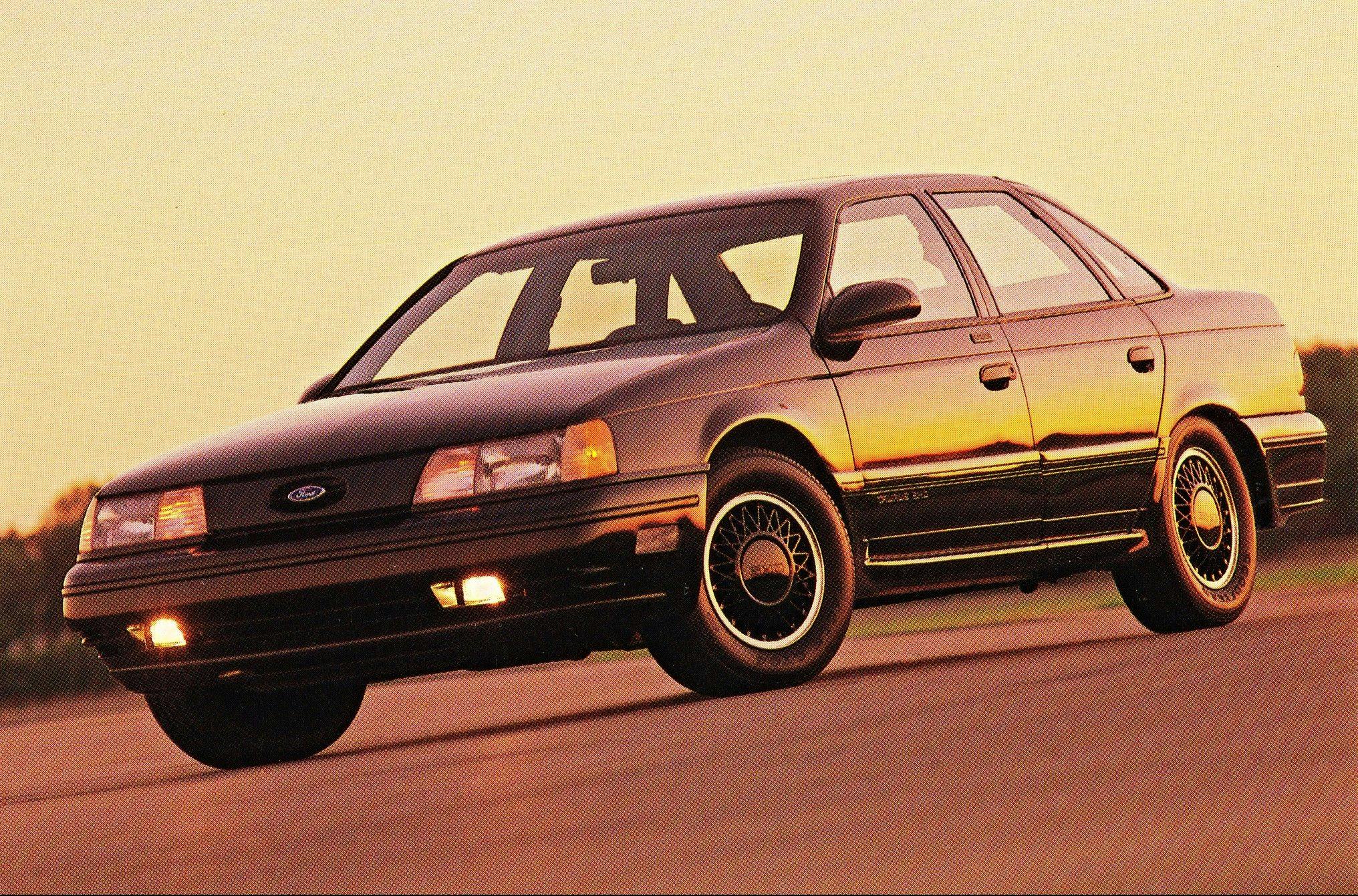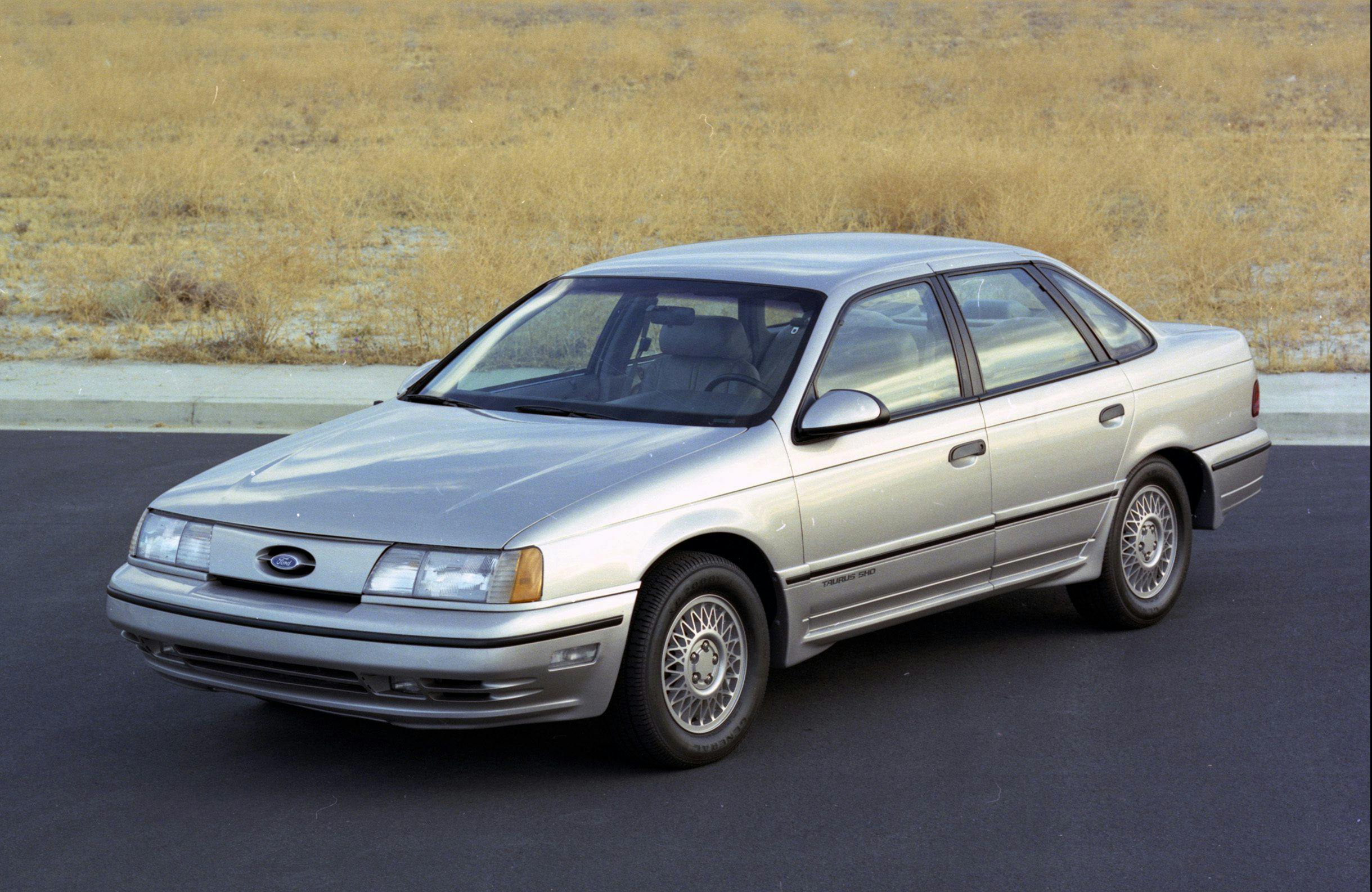Media | Articles
Ford’s 1989–95 Taurus SHO is a four-figure hot rod with a Japanese heart
Most of us probably think of the Taurus as a plain-Jane commodity car. The truth is that the original Taurus saved Ford’s bacon in the mid-1980s, staving off bankruptcy and selling over two million units from 1986–91. Your college roommate might have had a hand-me-down Taurus. Maybe your kid’s teacher drove one. Those in the know, however, remember that one specific Taurus was a genuine BMW fighter, and one of the fastest four-doors in the world during its heyday.
Known as the Taurus SHO (Super High Output), this ferocious Ford was the product of an unusual fling between the Blue Oval in Dearborn and Yamaha in Japan. While not exactly a cheap car when new, the SHO sold itself on performance per dollar and practicality. The target market was the driver who had Mustang dreams but lived more of a minivan life. These days, the original SHO sleepers of 1989–95 are more popular as collector vehicles than they have ever been, but they remain seriously attainable fun.
While the regular Taurus was selling in droves in the second half of the 1980s, Ford had some contractual obligations with Yamaha to satisfy. The Japanese firm had developed a double overhead cam, 24-valve version of Ford’s transverse 3.0-liter Vulcan V-6 for a model that never got off the ground, and Ford needed somewhere to put the engines. The Taurus was the natural choice, but originally this “Super High Output” model was supposed to be a limited affair. One 1989 commercial for the car called it “power in the hands of a fortunate few.” Then, over 15,000 of these fast Tauruses sold for the year. Car and Driver called it “the latest automotive breakthrough” that “turns the high-performance four-door sedan class on its head.” Ford decided, sensibly, that the SHO must go on.

Although the Taurus SHO got reworked suspension, bigger wheels, and some styling and interior upgrades over the standard car, the key to the car’s success was that zinger of a V-6. The Yamaha-built unit features an iron block, an aluminum head, forged crankshaft and connecting rods, and an innovative intake system with 12 runners. There are six long, primary intake runners that feed the engine at lower rpm, but at about 4000 rpm the shorter intake runners open to allow the engine to breathe even more freely at higher velocity. The result, aside from an aesthetically pleasing engine bay (the engine is perhaps nicer to look at than the car itself), is 220 hp and 200 lb-ft of torque. Shifting through a Mazda five-speed, the SHO can get to 60 mph in less than 7 seconds and tops out at 143. All impressive stuff for a 3200-pound car that hit the market for 1989. For reference, a Mustang 5.0 GT in the same year put out just 5 hp more, and a Corvette just 25 more. A BMW 535i, which cost twice as much, had a nearly identical top speed. All the sedans that could outperform the SHO were considerably pricier, and all the properly sporty cars that were quicker than the Ford couldn’t match its utility.
A second-generation Taurus SHO debuted for 1992. Although it’s almost mechanically identical to the first-gen, glorious Yamaha six and all, it has slightly more aggressive styling with special bumpers, side body cladding, and fog lights, as well as a few body panels from the Mercury Sable. A subtle rear spoiler arrived for 1993, along with some interior updates and new wheels, but the bigger news for that year was an available automatic transmission to help boost sales. Some early manual cars, it should be noted, roasted their clutches at an alarming rate, which only strengthened the case for the auto.
Marketplace
Buy and sell classics with confidence

Auto-equipped SHOs got a 3.2-liter version of the Yamaha V-6 with 15 more lb-ft of torque but the same hp rating; otherwise, they differed little from the manual cars. MotorWeek, testing one of the new self-shifting SHOs, remarked that “in our first test of the Ford Taurus SHO, we called it the first true American sports sedan … and it has lived up to that praise.” MotorWeek also noted a BMW-like ride, but if pushed hard in the corners “front plow is extremely heavy … and body roll also increased. But the chassis and suspension refused to give up their grip, no matter how hard we worked them.”
A third-generation Taurus SHO came out in 1996, but it was bigger and softer, and although the Yamaha unit was now a V-8 (with a block from Cosworth, no less), it only came with an automatic. This version lasted until 1999, when sales had plummeted to just 3000 units for the SHO’s final season. A new SHO based on the fourth gen Taurus didn’t come for another decade.
The original run of Taurus SHOs, in total, spanned three generations, and if we’re talking values, this is one of those rare cases where the middle child of the family is the favorite. The 1989–91 cars were the first of the breed, but the 1992–95 cars are worth on average a few hundred dollars more regardless of condition. These cars are all relatively affordable and approachable, however, with median #2 condition (Excellent) for the second-gen SHO coming in at just $8000 and #1 (Concours, or best-in-the-world) at $14,550. The median condition #3 (Good) value is just $5300. Again, first-gen examples are worth even less.
Keep in mind, values shot way up from late 2018 to the beginning of this year, with a 40 percent increase in #2-condition values over the past 24 months. Other than a decent (but certainly not perfect) 1994 SHO five-speed that sold for $8150 on Bring a Trailer, we’ve seen very few come close to a five-figure price.
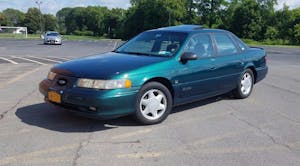
As for the SHO’s loyal fanbase, it’s a bit surprising that millennials make up the core of the group. In general, younger enthusiasts tend to like their cars a bit sportier and a bit more foreign. They make up a whopping 38 percent of buyer interest for second-gen SHOs and 44 percent for first-gen, even though millennials only make up about 22 percent of the market as a whole. Maybe it’s the idea of polishing up that intake to show your SHO off at cars and coffee, but the cheap prices probably have just as much to do with it.
That accessibility bodes well for keeping these cars relevant in the longer term, but we don’t expect anything drastic for their values in the near future. One thing holding them back is front-wheel drive, given that there is somewhat of a bias toward rear-drive cars when it comes to performance bonafides. The SHO is a bit of an oddball, too—an American hot-rod sedan with a Japanese V-6—so it doesn’t have widespread appeal. The performance by today’s standards isn’t jaw-dropping by any means, but no matter, this is an oh-so 1990s sleeper with an interesting history and it won’t break the bank. The SHO is worth watching, and although it’s cheap, it’s still a thrill.
